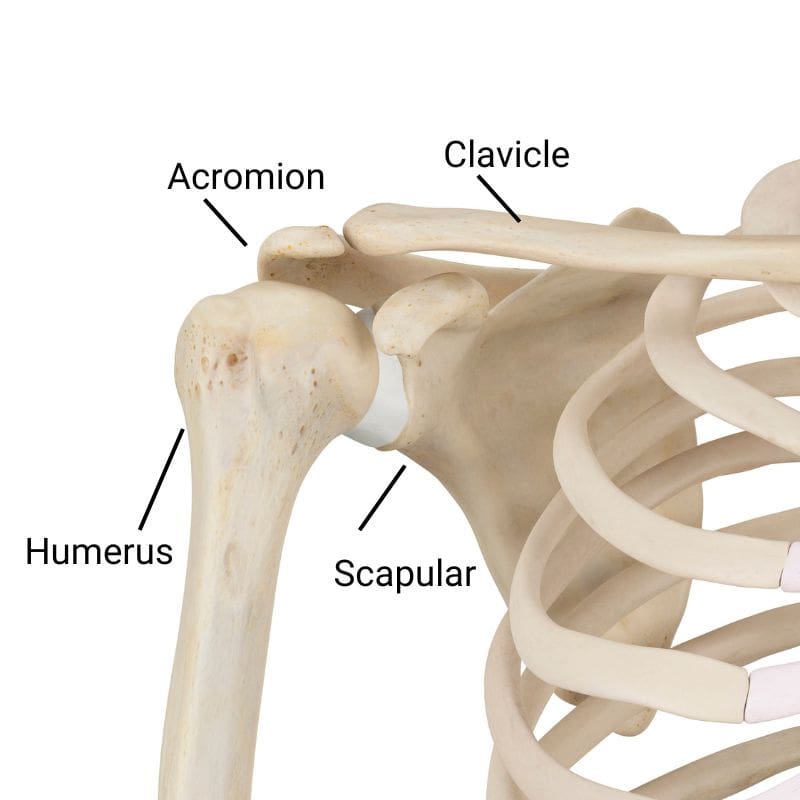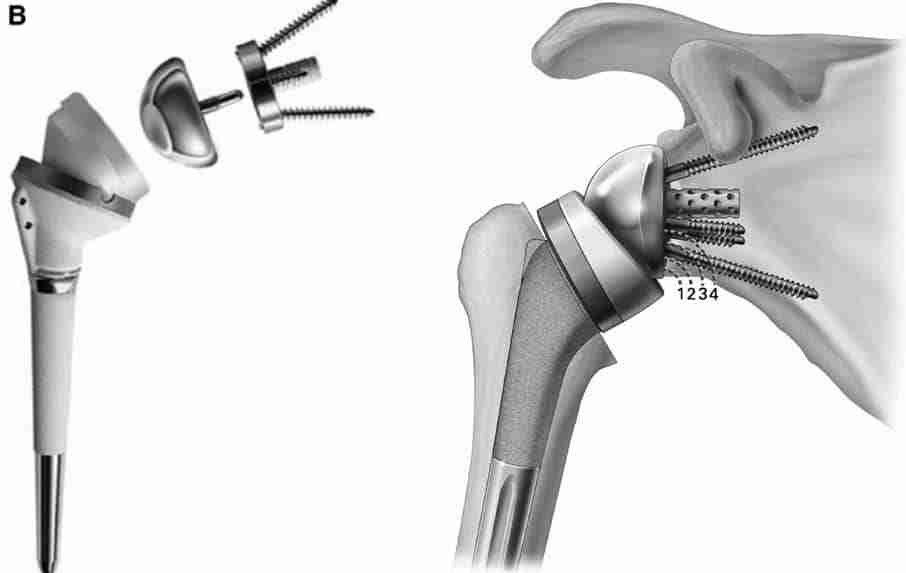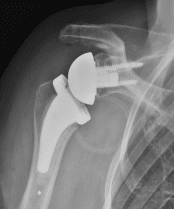If you’re living with ongoing shoulder pain, stiffness, or struggling with basic movements like dressing or reaching overhead, you’re not alone. When physiotherapy, injections, and conservative care no longer provide relief, surgery may be the next step.
One surgical option that’s growing in popularity across Australia is the Reverse Total Shoulder Replacement (RTSR)—a modern solution offering pain relief and improved shoulder function for specific types of shoulder damage.
What Is a Reverse Shoulder Replacement?
Your shoulder is a ball-and-socket joint. In a traditional shoulder replacement, the damaged parts of the joint are replaced with prosthetic components that mirror your natural anatomy: a ball on the upper arm (humerus) and a socket on the shoulder blade (glenoid).

In a reverse shoulder replacement, these are flipped—the ball is placed on the glenoid, and the socket on the humerus. This allows the deltoid muscle (rather than a damaged rotator cuff) to move and stabilise the shoulder.

Why Would Someone Need a Reverse Shoulder Replacement?
This surgery isn’t for every type of shoulder injury—it’s typically recommended when there’s:
- Massive, irreparable rotator cuff tears
- Rotator cuff arthropathy (arthritis plus cuff degeneration)
- Severe arthritis in the shoulder joint
- Failed previous shoulder surgery
- Dislocations or fractures that can’t be corrected with other methods
If these conditions are affecting your pain levels, sleep, independence, and overall function, and conservative treatment hasn’t helped, surgery may be the right next step.
A Quick History: How Reverse Shoulder Replacement Was Born
Shoulder replacement surgery has come a long way—thanks to decades of research and innovation.
In the 1950s, Dr. Charles Neer developed the first successful anatomical shoulder replacement. It helped many people with arthritis, but it didn’t work well when the rotator cuff was badly torn, which left a gap in treatment options.
In the 1980s, Professor Paul Grammont, a French surgeon, changed the game. He created the first truly effective reverse shoulder replacement, flipping the joint so that the deltoid muscle could take over when the rotator cuff had failed.
Since then, reverse replacements have been refined for better motion, fewer complications, and longer-lasting results. Today, they’re a trusted option for people with:
- Severe arthritis
- Rotator cuff injuries
- Previous shoulder surgeries that haven’t worked
At Physica, we stay at the cutting edge of rehab for these advanced procedures—supporting patients every step of the way.
Shoulder Replacements on the Rise in Australia
According to the Australian Orthopaedic Association National Joint Replacement Registry (AOANJRR), shoulder replacements—especially reverse designs—are increasing each year. In 2023 alone, there was a 13.9% increase in procedures, reflecting better outcomes and greater awareness.
Modern implants and surgical techniques have led to improved function, quicker recovery, and excellent long-term results for many patients.
What to Do Before Surgery: Prehab Matters
Physiotherapy before surgery—commonly called prehabilitation or “prehab”—is a smart way to prepare your body and mind.
Prehab helps you:
- Strengthen surrounding muscles like the deltoid and scapular stabilisers
- Learn correct postural positions and sling use
- Improve sleep, pain control, and joint protection
- Build confidence with gentle, guided movements
At Physica, we tailor prehab programs based on your unique shoulder status and upcoming surgical date.
Reverse vs Anatomical Shoulder Replacement: What’s the Difference?
While reverse shoulder replacements have become more common, they are not the only surgical option. In many cases—especially when the rotator cuff is intact—an anatomical shoulder replacement may be a better fit.
Here’s a quick comparison:
| Feature | Anatomical Shoulder Replacement | Reverse Shoulder Replacement |
|---|---|---|
| Design | Mimics natural ball-and-socket joint | Reverses ball and socket position |
| Best For | Arthritis with intact rotator cuff | Large, irreparable cuff tears or cuff arthropathy |
| Main Muscle Used | Rotator cuff | Deltoid |
| Common Age Group | Often younger or active adults | Often older adults or complex cases |
| Goals | Restore normal mechanics | Regain function when cuff is non-functional |
While reverse shoulder replacements are a great solution for many people with complex shoulder issues, they’re not always the right option.
If your rotator cuff is still strong and working well, your surgeon might recommend an anatomical shoulder replacement instead. This type of surgery keeps the shoulder joint in its natural shape and is often ideal for:
🔍 Your Physio + Surgeon = The Right Fit
Choosing the correct type of shoulder replacement is a team effort between your orthopaedic surgeon and physiotherapist. Your Physica physio can help you explore options based on your shoulder strength, movement quality, and imaging results.
What Happens During the Operation?
A reverse shoulder replacement takes 60–120 minutes and is usually done under general anaesthesia. The surgeon makes a small (~10cm) incision on the front of the shoulder, removes the damaged bone, and replaces it with metal and plastic components.
You’ll typically stay in hospital 1–2 nights, during which you’ll begin gentle physio and learn how to care for the joint.
What Is Recovery Like?
Weeks 0–6:
- Wear a sling full-time
- Focus on gentle assisted movements (under physio guidance)
- No lifting or pushing with the surgical arm
Weeks 6–12:
- Begin active movement with controlled exercises
- Start light functional tasks
- Gradual return to independence
Months 3–6:
- Resume hobbies like gardening, bowls, or gentle swimming
- Drive (after surgeon clearance, usually at 6 weeks)
- Begin progressive strengthening
Months 6–12:
- Full return to most personal, home, and light recreational activities
- Continue strength and control-based rehab with your physio
Note: Sports like tennis or golf may resume after 4–6 months depending on your progress.
What Are the Risks?
As with any surgery, complications can occur. The most common risks include:
- Minor infection at the incision site
- Joint stiffness or mild ongoing pain (in ~10–20% of cases)
- Dislocation of the implant (rare: 1–5%)
- Very rare: nerve or vessel injury, or deep infection
- Long-term: implant loosening (uncommon with modern prostheses)
What Results Can I Expect?
For most patients, reverse shoulder replacement provides:
- Significant pain relief
- Improved mobility (reaching your head, dressing, toileting)
- Greater confidence and function in daily life
While it’s not designed for heavy lifting or high-speed sport, many people return to their favourite hobbies and regain lost independence.
📍 This article was created with contributions from the team at Physica and includes clinical perspectives from leading shoulder surgeon Mr. Simon Lau, Shoulder Surgeon (MBBS BMedSci PGDip MSc FRACS FOrthA). https://www.drsimonlau.com.au/

